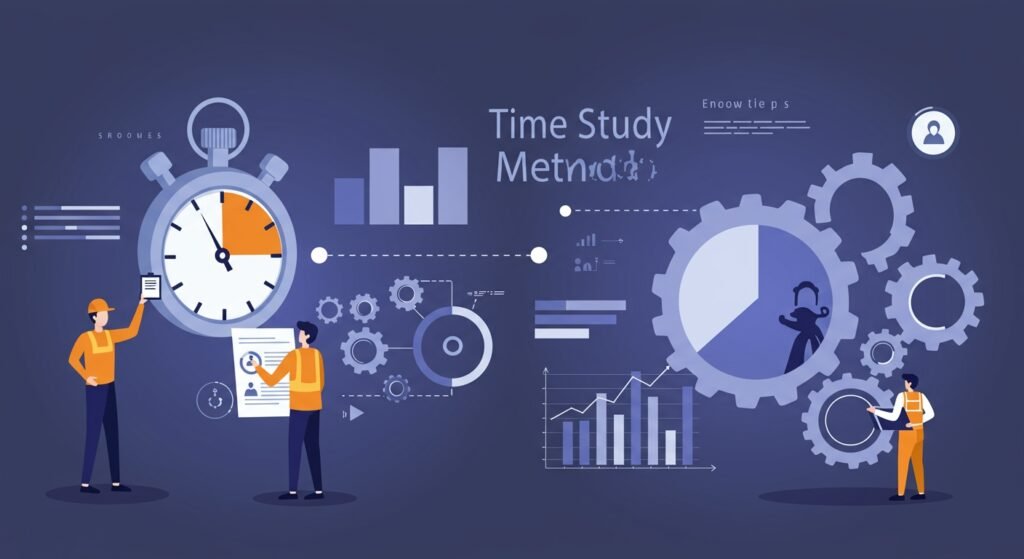Understanding and optimizing the time spent on tasks is crucial for efficiency and productivity in any organization. This is where Time Study Methods Explained comes into play, providing systematic approaches to measure the work content of a job. By meticulously analyzing the time required for trained workers to complete specific tasks, businesses can identify bottlenecks, improve processes, and set realistic performance standards. Delving into these methodologies offers a profound insight into operational excellence and continuous improvement.
Table of Contents
- What Are Time Study Methods Explained?
- Key Benefits of Time Studies
- Common Time Study Techniques
- Implementing Time Studies Effectively
- Challenges and Best Practices
- The Future of Time Studies
What Are Time Study Methods Explained?
At its core, time study involves observing and recording the time taken to complete various elements of a task under specified conditions. The goal is to establish a standard time, which is the time required for an average worker, working at a normal pace, to complete a task, including allowances for fatigue and personal needs. These methods are foundational in industrial engineering and operational management, helping to streamline workflows and reduce waste. Whether in manufacturing, service industries, or even administrative roles, the principles of time study remain universally applicable for enhancing output and reducing costs.
Key Benefits of Time Studies
Implementing time studies yields a multitude of advantages for businesses. Firstly, they enable the accurate setting of production standards and performance targets, leading to fair compensation schemes and improved workforce motivation. Secondly, by identifying inefficient movements or processes, time studies pave the way for method improvements, often resulting in significant cost savings and increased throughput. They also provide reliable data for production planning, scheduling, and resource allocation. Furthermore, understanding the true time content of tasks assists in pricing products and services more accurately, ensuring competitiveness in the market. The insights gained are invaluable for strategic decision-making and fostering a culture of continuous improvement.
Common Time Study Techniques
There are several established methodologies for conducting time studies, each suited for different scenarios and objectives.
Stopwatch Time Study
This is perhaps the most traditional and widely recognized method. It involves direct observation of a worker performing a task, with a stopwatch used to record the time taken for each element of the job. The observed times are then adjusted for worker performance (rating factor) and supplemented with allowances to arrive at a standard time. It’s best for repetitive, short-cycle tasks.
Standard Data Time Study
Instead of new observations, this method utilizes pre-existing time data from previously conducted time studies on similar elements. Companies often build libraries of standard times for common work elements, which can then be combined to estimate the time for new or modified tasks without repeated direct observation. This saves time and resources, particularly for tasks composed of familiar elements.
Predetermined Motion Time Systems (PMTS)
PMTS involves analyzing a task by breaking it down into fundamental human motions (e.g., reach, grasp, move, position) and assigning pre-established time values to each motion. Examples include Methods-Time Measurement (MTM) and Work-Factor. This method can be used to set standards before a job even exists or to evaluate alternative work methods without direct observation, offering high precision.
Work Sampling
Also known as activity sampling, this technique involves making a large number of random observations of workers or machines over a period. The proportion of observations in which an activity is occurring provides an estimate of the proportion of time spent on that activity. It’s particularly useful for non-repetitive tasks, long-cycle operations, or assessing indirect work, providing a statistical estimate rather than precise individual task times.
Implementing Time Studies Effectively
Successful implementation of time studies requires careful planning and execution. Here’s a brief overview of key steps:
| Step | Description | Key Considerations |
|---|---|---|
| 1. Select Task | Identify the specific task or operation to be studied. | Focus on high-impact, bottleneck, or new tasks. |
| 2. Define Elements | Break the task into distinct, measurable elements. | Elements should be clear and have definite start/end points. |
| 3. Observe & Record | Measure and record element times using a chosen method. | Ensure consistent observation and sufficient cycles. |
| 4. Rate Performance | Assess the worker’s performance relative to normal pace. | Objectivity is crucial; training for observers is vital. |
| 5. Calculate Normal Time | Observed Time x Performance Rating. | This removes the effect of individual worker pace. |
| 6. Apply Allowances | Add allowances for fatigue, personal needs, and delays. | Allowances vary by industry and working conditions. |
| 7. Determine Standard Time | Normal Time + Allowances. | This is the target time for a qualified, motivated worker. |
Engaging employees in the process and explaining the objectives can significantly improve cooperation and the accuracy of results.
Challenges and Best Practices
While invaluable, time studies are not without challenges. Resistance from employees, concerns about being ‘timed’, and the potential for observer bias are common issues. To mitigate these, transparent communication, employee involvement, and thorough training for observers are crucial. It’s vital to explain that the goal is process improvement, not just surveillance. Best practices include using standardized procedures, conducting studies under typical working conditions, and regularly reviewing and updating established standards. For more insights on optimizing operations, explore our guide to operational efficiency.
The Future of Time Studies
The field of time study continues to evolve with technological advancements. While traditional methods remain foundational, new tools like video analysis, motion capture, and even AI-driven process mining are offering more sophisticated and less intrusive ways to collect and analyze time data. These innovations allow for greater precision, reduce the human element of observation bias, and can provide continuous monitoring capabilities. The integration of time study principles with big data analytics and smart manufacturing is a growing trend, as discussed by experts in industrial engineering trends. This evolution promises even more accurate and dynamic insights into work measurement, further solidifying the role of time studies in future operational strategies.
In conclusion, mastering Time Study Methods Explained is an indispensable asset for any organization striving for peak operational performance. By systematically measuring and analyzing work, businesses can unlock significant efficiencies, optimize resource utilization, and foster a more productive work environment. The investment in understanding these methodologies pays dividends in enhanced competitiveness and sustainable growth.


